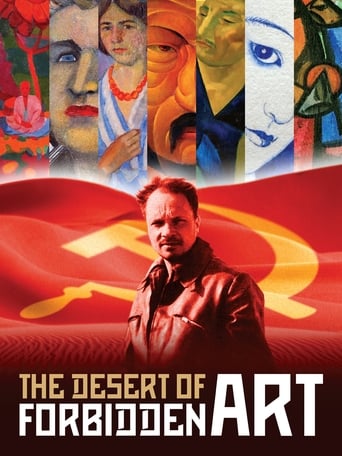del_gado
In the midst of a totalitarian dictatorship, an eccentric man risks his life and uses his wiles to save what he values far more than his society does. What, you mean you've already seen "Schindler's List?!" But what if, instead of saving people, the man just saved art - tons and tons of splendid art?This amazing story, with characters as wild and bizarre and wonderful as any you'll see in any flick, is terrifying, heartwarming, funny, and hugely human. Even if you're not an art-lover, this tale tells so much about our times, there's no way to not be moved. It's both a good and bad thing that this came out in a time when there were so many important and excellent documentaries that this got ignored by the Oscars. It's a movie for everyone - take your grandmother and your kids. Cannot recommend it enough.
vsereb
No art history degree is required - this movie is story of the person, portrait of epoch - distant and the current one. Cinematographicaly the movie is very well shot, it is well researched - never seen materials from Russia's Krasnogorsk film archives are used. Quite unusual but completely on the point is the citation from the cult Russian movie "White Sun of the Desert" (1970) http://www.imdb.com/title/tt0066565/. The movie is not trying to depict the Soviet era as 70 years of horrors - it rather shows that it's up to individual to find his/her way while being artistically (as I.Savitsky himself) or politically rejected.The editing of this movie is done more in line with Russian film-making tradition - which makes viewer to be much more emotionally involved then your standard History channel movie.Overall it's rare case when we have a worthy subject, the passionate filmmakers and the best intentions of the authors of the movie are perfectly aligned with their capabilities to deliver.
Norman Mark
A memorable documentary, an incredible story of how 44,000 unknown works of art came to be in a museum in Upper Uzbekistan, a film that combines elements of a spy story, fascinating history, dangerous quests and a fear of the future. Absolutely stunning. What is not in the film is that this collection is located in a secret, off-the-maps city where Soviets experimented with gas, germ and nuclear warfare, and that is another reason why the outside world does not know about the city or the museum that is in it. I will never forget the images of the art in this film, paintings equal to or better than those of Impressionists seen in books and other museums. And remember: only 400 of the 44,000 paintings have ever been photographed. Most have never been catalogued!!As a movie reviewer and concerned citizen, I have been recommending this marvelous film to everyone interested in humanity, art, and history. Four stars!!!! SEE IT, SUPPORT IT, HELP SAVE THIS UNKNOWN AND IMPORTANT ART FROM POSSIBLE DESTRUCTION BY RADICAL MUSLIMS, WHO SURROUND IT.
ratcityfilmsociety
In a remote region of a remote Soviet republic there once lived Igor Savitsky, a museum curator. If his profession had saints he would be among the most revered. In his half century career he filled his museum with art that was often (literally) on the verge of disappearing onto the dust heap of history. Not only did he acquire these works of art; he paid for them, with state allocated funds. A true "holy fool" for art, he relentlessly sought pieces for his museum up to the time of his death, with almost no government interference. Savitsky's story is enough, but the film also examines the lives and work of some of the artists who owed their artistic existence and legacy to this amazing man. It is a well structured and remarkably apolitical documentary, utilizing some of the great living narrators in contemporary English language film. The love for art has rarely been so well represented in a documentary, not to mention that the actual works of art are absolutely stunning.


